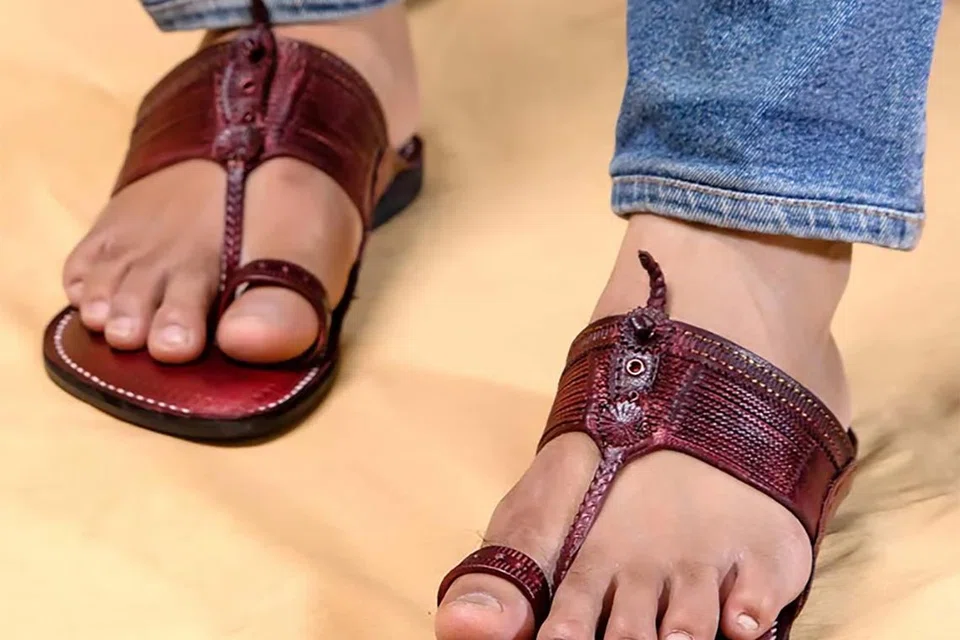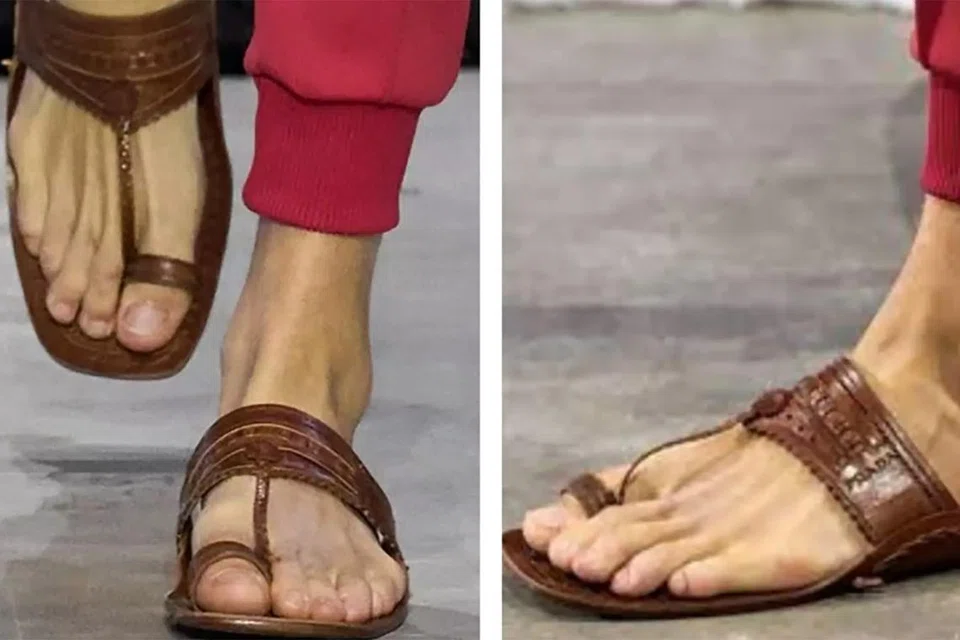Italian luxury brand Prada has found itself at the centre of a heated controversy after unveiling sandals that closely resemble traditional Indian Kolhapuri chappals – but without giving any credit to their origins.
Priced at an eye-watering Rs1.2 lakh ($1,787), the so-called “leather flat sandals” made their debut at Prada’s Spring/Summer 2026 menswear show in Milan on June 22, prompting widespread accusations of cultural appropriation.
The sandals, worn in at least seven of the show’s 56 looks, featured the iconic tan leather minimalist straps, and toe loops unmistakably associated with the Kolhapuri chappal, a centuries-old craft from Maharashtra’s Kolhapur region.
Adding to the irony, Prada distributed “leather ring” tokens at the show – an apparent nod to the toe-ring design – but nowhere did the brand mention the chappal’s Indian heritage or the artisans behind it.
“Prada is selling Kolhapuri chappals for Rs1.2 lakh. These are made by Indian artisans for Rs300–Rs1,500. No credit. No history. Just rebranding and theft,” posted one user on X.
“This design was stolen from the Chamar community who’ve handcrafted these for generations. It’s cultural theft dressed up as luxury,” another added.
Indian fashion historians and designers also expressed concern. Ritu Sethi, a noted fashion researcher, said: “Kolhapuris are not just sandals – they are a living tradition. It’s deeply disheartening to see such crafts showcased globally without acknowledgment.”
The uproar reignites a familiar debate around cultural appropriation in fashion, particularly how global luxury brands continue to borrow from traditional aesthetics without giving due credit or sharing benefits with the original communities.
Kolhapuri chappals trace their roots back to the 12th century, with unique designs crafted by local artisans, often from marginalised communities.
The footwear is not only a staple of Indian culture but also holds a Geographical Indication (GI) tag, affirming its authenticity and origin. Crafted by hand and requiring up to six weeks to make, Kolhapuris are celebrated for their durability and heritage.
Author and cultural commentator Shobhaa De, whose family hails from Kolhapur, offered a more nuanced take on the controversy.
“We should be flattered, not outraged,” she said in a TV interview, even holding up her own Kolhapuris. “If anything, this might be an indirect tribute. Maybe it will lead to a revival.”
But many disagree. The central concern isn’t the use of the design – it’s the erasure of its identity. As one critic put it: “Rebranding Indian tradition as Western innovation isn’t tribute – it’s colonisation by couture.”
Prada’s Kolhapuri controversy echoes similar instances of Indian aesthetics being rebranded without context. Scarves that resemble dupattas have been dubbed “Scandinavian minimalism.” Lehenga-style skirts are sold as “Y2K maxis.” Even Alia Bhatt’s saree at Cannes was labelled a “gown” by Western media outlets.
Fashion insiders argue that such oversights aren’t isolated – they reflect systemic issues in the global fashion industry where artisanal labour is undervalued and cultural heritage commodified.
“It’s time global brands adopt ethical design practices,” one post read. “Credit the culture, pay the communities. That’s the real luxury.”


